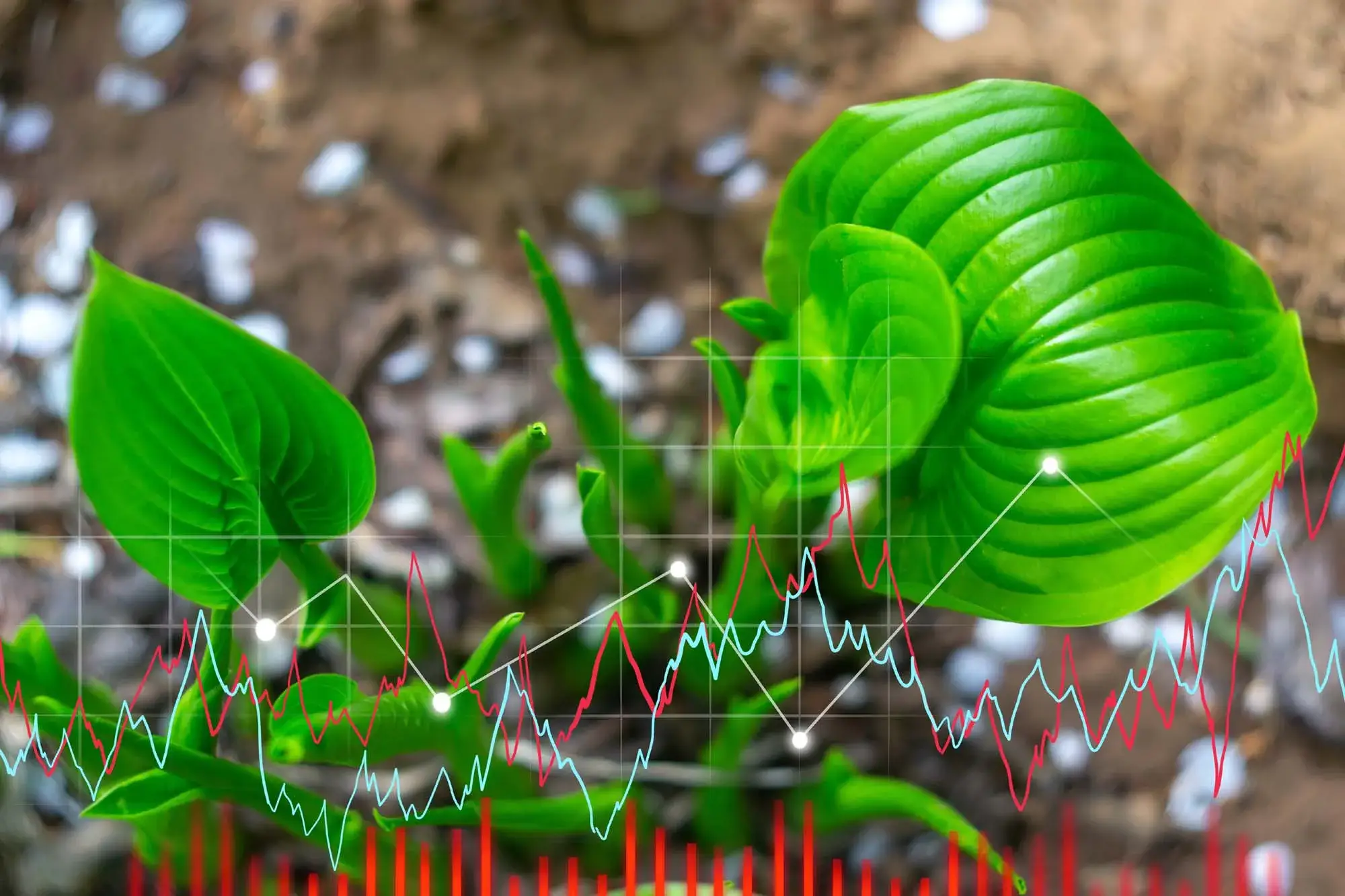
Artificial Intelligence (AI), supported by IoT technology, is one of the most promising innovations in agriculture. Intelligent systems allow for precise monitoring of key factors influencing plant growth, such as temperature, light, humidity, and soil quality. By using AI tools for data analysis, it is possible to optimize growing conditions, reduce errors, and increase yields, making agriculture more efficient and sustainable.
The Internet of Things (IoT) refers to the interconnection of physical devices and objects to the internet, allowing for real-time data collection, analysis, and sharing. In agriculture, IoT devices can be deployed in various environments, such as open fields, greenhouses, and vertical or hydroponic farming systems. These devices monitor key parameters such as temperature, humidity, light, and soil quality, helping to understand the conditions in which plants grow and make better decisions to optimize yields.
Temperature and Humidity: These factors are essential for photosynthesis and metabolic processes in plants, as their control enables optimal growth.
Light Intensity: Light is vital for photosynthesis, and its intensity directly affects the speed and quality of plant growth.
Carbon Dioxide (CO2) Levels: Increased CO2 concentrations can positively affect the yield of certain plants, especially those that benefit from such conditions.
Soil pH: The correct pH value is crucial for efficient nutrient absorption, improving plant health.
Nutrient Levels: Monitoring elements such as nitrogen, phosphorus, and potassium allows for precise management of plants' nutritional needs.
Continuous data collection and real-time analysis enable informed decisions on irrigation, fertilization, and crop protection, thus enhancing the efficiency and sustainability of production.
AI plays a key role in analyzing the vast amounts of data collected by IoT devices. Based on this data, AI can detect patterns that are often not visible to the human eye, enabling precise predictions about plant growth conditions and optimization of production.
Predictive Analytics: One of the main benefits of AI in agriculture is its ability to predict outcomes. Based on historical data and current parameters, AI algorithms can predict how plants will behave under specific conditions. For example, if temperature or humidity increases significantly, AI can warn of potential problems such as plant stress or disease risks. These predictions allow for quicker responses and help prevent potential damage.
Optimization of Growing Conditions: By combining data from IoT devices and advanced AI models, detailed recommendations for optimal conditions for each plant species can be obtained. For example, if AI notices that a plant responds better to a certain level of light or humidity, it can automatically adjust irrigation or lighting systems to ensure optimal growth. These systems can be automated to reduce human intervention and errors.
Pattern Recognition for Resource Management: AI can analyze data on water, energy, and fertilizer usage, recognizing patterns that indicate overuse or underuse of resources. For example, if IoT sensors show that soil moisture is sufficient, but the irrigation system is still running, AI can alert to a malfunction or suggest optimization of resources. This reduces waste, leading to cost savings and increased efficiency.
Disease and Pest Recognition and Prevention: AI systems can use data from IoT devices, along with weather data and disease history, to predict potential outbreaks of diseases or pest infestations. For instance, if temperature and humidity combine to create optimal conditions for a fungal disease, AI can recommend preventive measures or automatically trigger spraying or other protective actions.
Automatic Learning and Adaptation: AI systems with machine learning capabilities can adapt to new conditions and plant behaviors over time. By learning from past seasons, AI can continually improve recommendations and optimize processes. For instance, if it is discovered that a certain plant species responds better to a change in light conditions during the summer months, the system will automatically apply these adjustments in future cycles.
Increased Yields: AI helps in more precise monitoring and adjusting of growing conditions, leading to greater efficiency and higher yields.
Resource Savings: By optimizing irrigation, fertilization, and pesticide use, costs can be reduced, and water, energy, and other resources can be conserved.
Sustainable Agriculture: By using AI for precise monitoring and management, agriculture can become more sustainable and less harmful to the environment. Reduced use of pesticides and fertilizers means less impact on biodiversity and nature.
Faster Decision-Making: With AI systems quickly analyzing data, better decisions can be made in real-time, increasing the chances of successful growth and reducing the risk of mistakes.
Artificial intelligence, combined with IoT devices, is revolutionizing data analysis concerning plant growth conditions. Using advanced data analysis systems enables even more precise decision-making, improving yields, reducing costs, and minimizing the negative impact on the environment. These technologies not only optimize growing conditions but also enhance resource management, prevent diseases and pests, and increase the sustainability of agricultural systems. As technologies continue to advance, their impact is expected to become even more pronounced, opening new opportunities for more eco-friendly and cost-effective food production.